If you’re shopping for a new TV but can’t (or won’t) stretch your budget enough to enter the realm of OLED TVs, a QLED TV can be a great choice.
If you want your next TV to be a QLED, the most important thing to look out for is the presence of the local dimming feature, also known as full-array local dimming (FALD), usually based on Mini-LED backlighting in newer QLED TVs.
Local dimming is basically a bunch of LEDs divided into zones that turn on or off depending on the scene’s brightness. If a part of a movie or game scene is bright, LEDs in that area will shine as bright as possible while they get dimmer or entirely turned off in darker parts of the same scene.
The more FALD zones there are, the better. Nowadays, even budget QLED TVs come with FALD, which is great news for budget-conscious buyers. My advice is to aim for a FALD QLED TV even if you’re on a budget. If a TV lacks FALD, dark areas will look washed out, and the overall contrast ratio will be poor.
You should also focus on the maximum brightness the TV you’re eyeing can deliver. High max brightness combined with many FALD zones equals a great HDR experience. The maximum brightness of about 500 nits and higher should be enough for an enjoyable HDR experience.
Other features you should look out for include the presence of HDMI 2.1 ports in case you plan to hook your gaming PC or console to your TV, high-refresh-rate support (120Hz is the standard these days, although some higher-end TVs also offer a 144Hz refresh rate) for gaming, variable refresh rate (VRR) support for gaming, and auto low latency mode (ALLM).
There’s much to say about TV size, so I recommend checking out our guide on picking the right-sized TV. If you want more info to help you choose the suitable TV for your needs, read our guide on buying a TV.
|
How Did We Research |
||
|
Models Evaluated |
Hours Researched |
Reviews Analyzed |
|
15 |
6 |
18 |
How-To Geek’s product recommendations come from the same team of experts that have helped people fix their gadgets over one billion times. We only recommend the best products based on our research and expertise. We never accept payment to endorse or review a product.
Read More »
|
Pros |
Cons |
|---|---|
|
✓ Great all-around performance |
✗ Expensive |
|
✓ Offers an Impressive HDR experience |
✗ Lacks Dolby Vision support |
|
✓ Fantastic choice for gaming |
|
|
✓ Four HDMI 2.1 ports |
|
|
✓ 144Hz refresh rate |
|
|
✓ Available in seven different sizes |
The Samsung QN90D is the latest and greatest QLED TV from Samsung. This one’s a jack-of-all-trades TV set, but also a master of a few features. It’s got 720 local dimming zones, a max brightness that surpasses 2,000 nits, fantastic colors, and a praiseworthy contrast ratio.
The QN90D offers a 144Hz refresh rate, VRR support, ALLM, and four HDMI 2.1 ports, which together make it an impressive gaming option. Other features that amplify the gaming experience on the QN90D include excellent response time, low input lag, and superb SDR brightness, allowing you to enjoy games that don’t support HDR even in a bright room.
Moving on, there is a satisfying low-resolution upscaling in case you don’t use any streaming box or something like Apple TV or Chromecast, automatic removal of 24fps judder, and pretty solid color accuracy, making it a pretty good option for movies, TV shows, and sports.
The QN90D comes in seven different sizes, so I’m certain you’ll find a perfect size for your room. The only variance between the different sizes is the 120Hz refresh rate instead of 144Hz on the 98-inch model. Regarding the OS, you’ve got a Samsung-made Tizen operating system that works rather well and is snappy but lags behind Google TV regarding app support.
No TV is perfect, however. For starters, this is a flagship QLED model, but it’s pretty expensive even when compared to other high-end QLEDs. Another nitpick is that Samsung still omits Dolby Vision and DTS audio support on its TVs, including this one.
If you want a Samsung-made QLED, but this year’s flagship is too pricey for your budget, last year’s QN90C is quite close to the quality of the QN90D while being more affordable. If you want the best bang-for-buck option, check out the Hisense U8K or the 2024 model, the Hisense U8N.
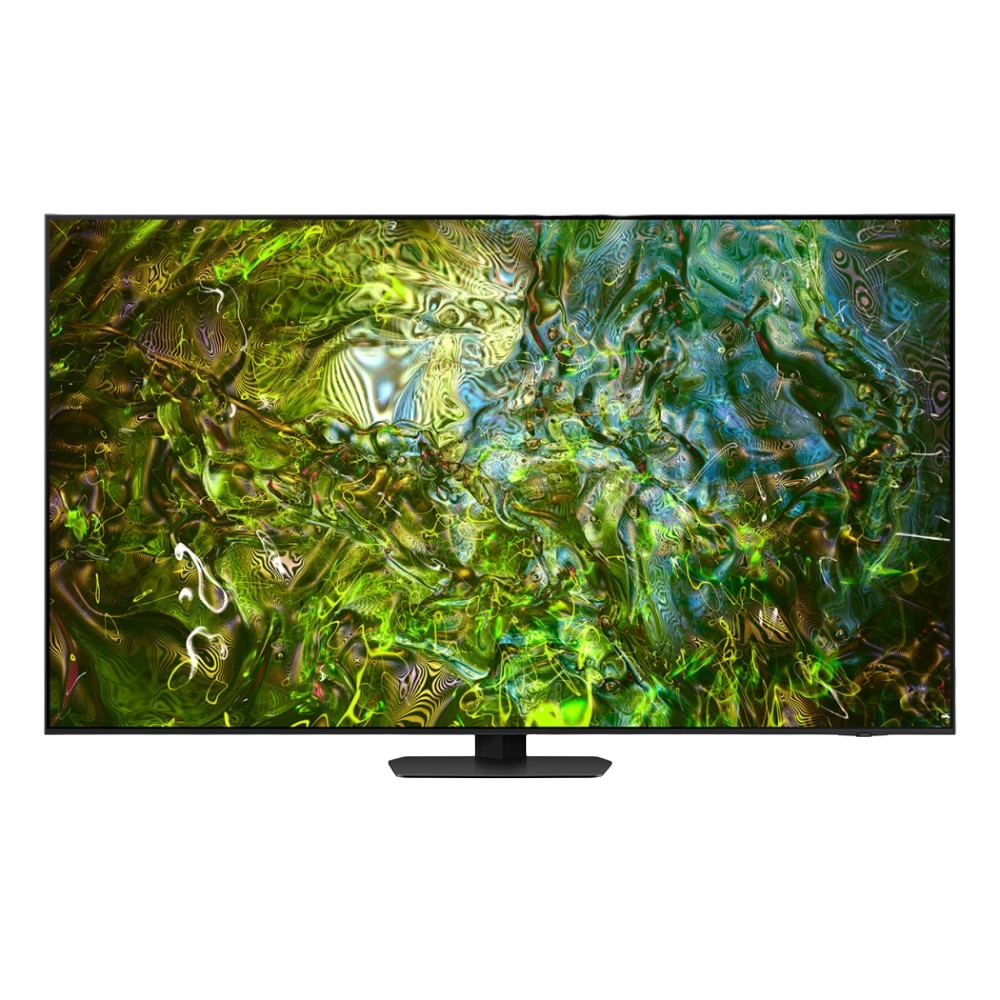
|
Pros |
Cons |
|---|---|
|
✓ Decent HDR experience |
✗ Limited to a 60Hz refresh rate |
|
✓ Impressive contrast for a budget offering |
✗ Slow response time |
|
✓ VRR support |
✗ Less than ideal viewing angles |
|
✓ Punches above its weight concerning overall performance |
The Hisense U6N is Hisense’s latest budget QLED model, offering a lot for your money. It’s bright enough to enjoy HDR content in a well-lit room and has an impressive contrast ratio for a budget TV.
Its refresh rate is limited to 60Hz, but the U6N is still a solid choice for gaming thanks to VRR support, wide color gamut, low input lag, and solid low-res upscaling, making 1080p games pretty sharp on its 4K panel.
Luckily, 60Hz isn’t an issue when it comes to enjoying movies and TV shows, which look great on the U6N thanks to its high enough HDR brightness, impressive contrast, vivid colors, and commendable color accuracy out of the box. Another plus is the presence of Google TV, which is arguably the best choice among smart TV software platforms.
On the flip side, the VA panel used here has less than ideal response time, which can especially be noticed in darker scenes. Said VA panel also equals narrow viewing angles. If you’re looking for a QLED TV that performs very similarly to the U6N but costs less, the 2023 budget QLED from Hisense, the U6K, is just what you need.
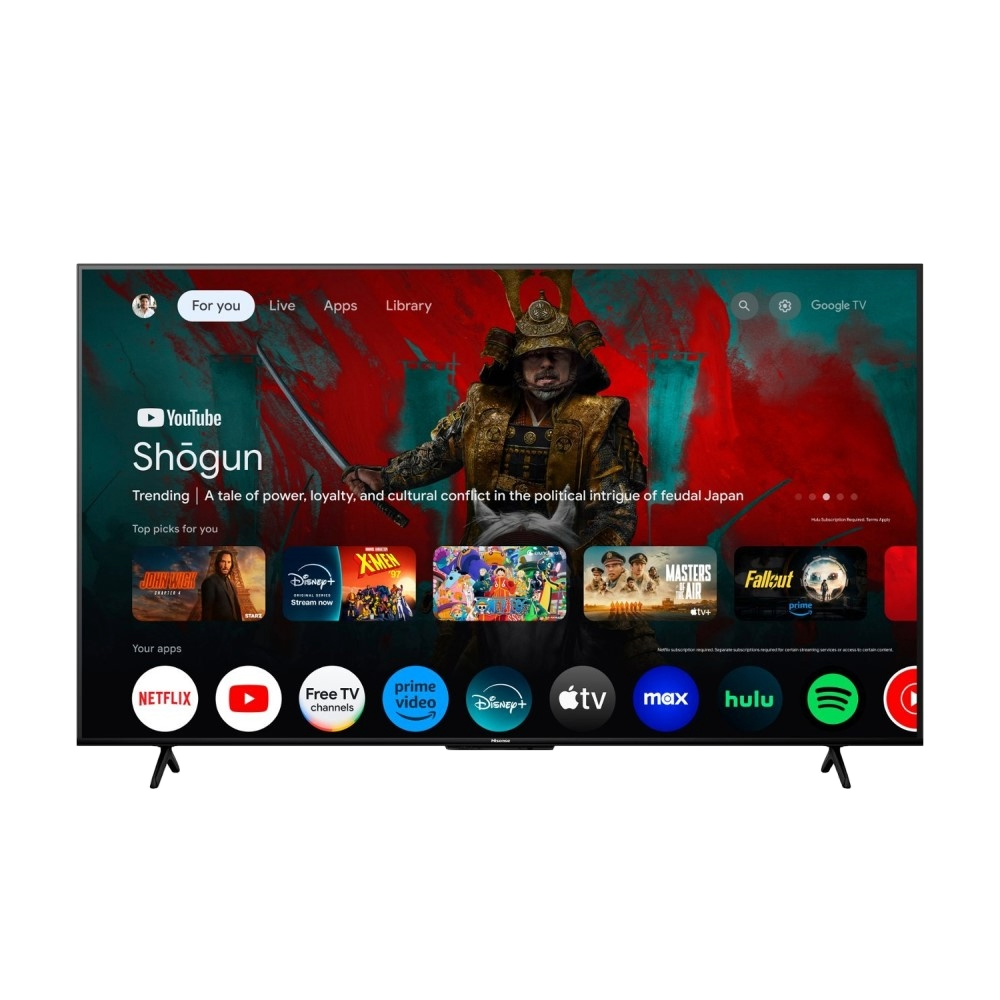
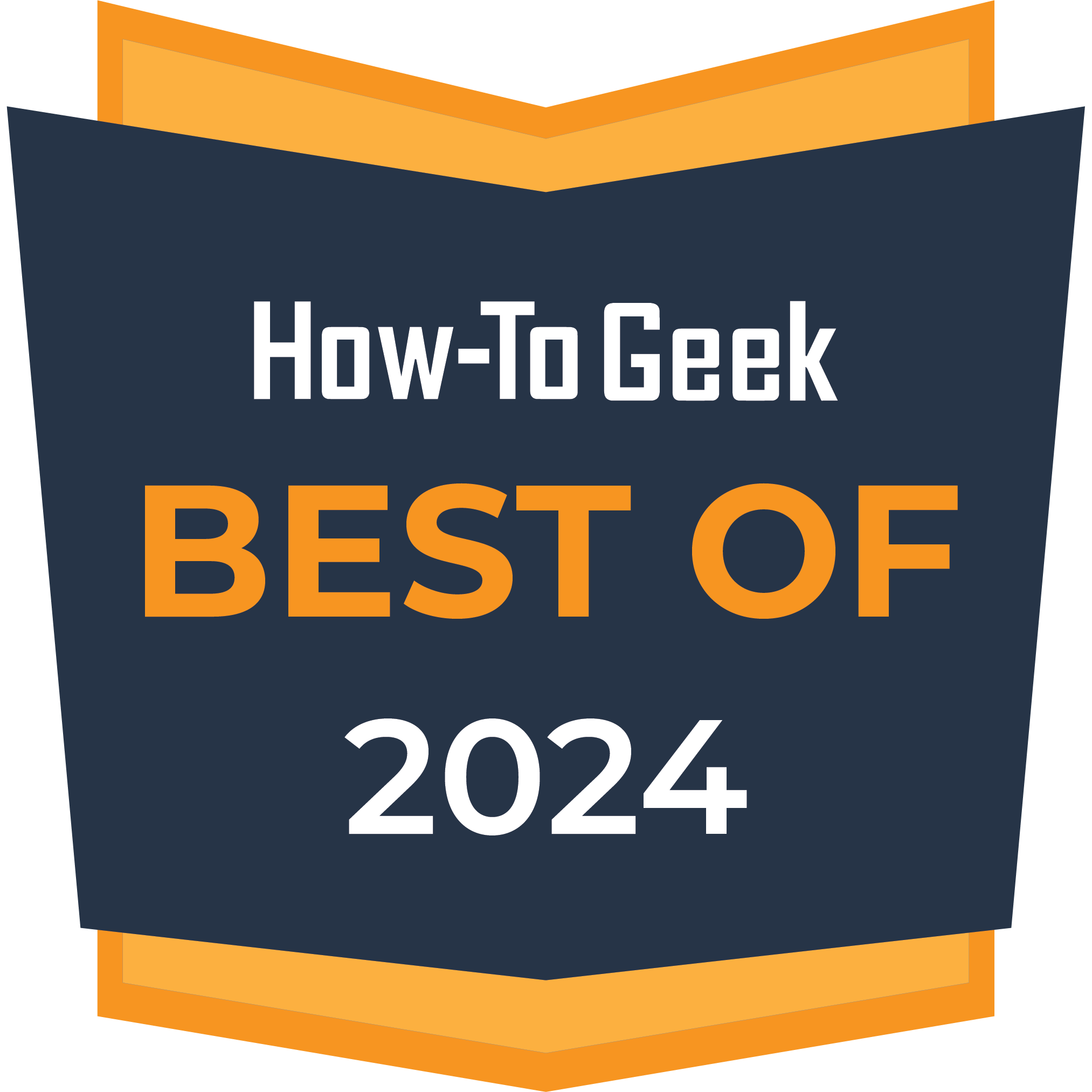
Best Budget QLED TV
Hisense U6N
$448 $600 Save $152
The Hisense U6N punches above its weight and does so in style. Solid HDR, a contrast ratio and out-of-the-box color accuracy you would expect from a high-end QLED TV, and a well-rounded collection of gaming features make the U6N the best budget QLED TV on the market.
Best QLED TV for Gaming: TCL QM8
|
Pros |
Cons |
|---|---|
|
✓ Super bright |
✗ Only two HDMI 2.1 ports |
|
✓ 144Hz refresh rate |
✗ Narrow viewing angles |
|
✓ 240Hz refresh rate at 1080p |
|
|
✓ Outstanding HDR experience, in games and movies |
|
|
✓ Fast response time and low input lag |
The QM8 from TCL gets very close to being a perfect gaming TV. It’s super bright, with a max HDR brightness of up to 2,000 nits and a max SDR brightness that’s almost the same. It comes with a native refresh rate of 120Hz, but you can drive it up to 144Hz even at 4K and up to 240Hz at 1080p, which is perfect for high refresh rate gaming if you own a beefy gaming PC.
The contrast ratio is impressive as well, and the TV comes with more than 1,000 dimming zones, making the HDR experience very close to that found on OLED TVs. Other specs important to gamers include fast response time, VRR support, and exceptionally low input lag when in Game Mode. The TV supports ALLM on the PS5 and Xbox Series consoles.
While the TCL QM8 is an outstanding choice for gaming, it’s also pretty solid for movies and TV shows thanks to its excellent HDR experience, removal of 24fps judder, stellar contrast, and wide color gamut. The OS used is Google TV, which works fast and supports a ton of apps.
The main downside of the TCL QM8 is the presence of only two HDMI 2.1 ports. Another issue is narrow viewing angles, which could mar your co-op gaming sessions. If you want a TV for gaming with four HDMI 2.1 ports, check out the Samsung QN90D or the 2023 model, the QN90C; just be aware that both are more expensive than the TCL.
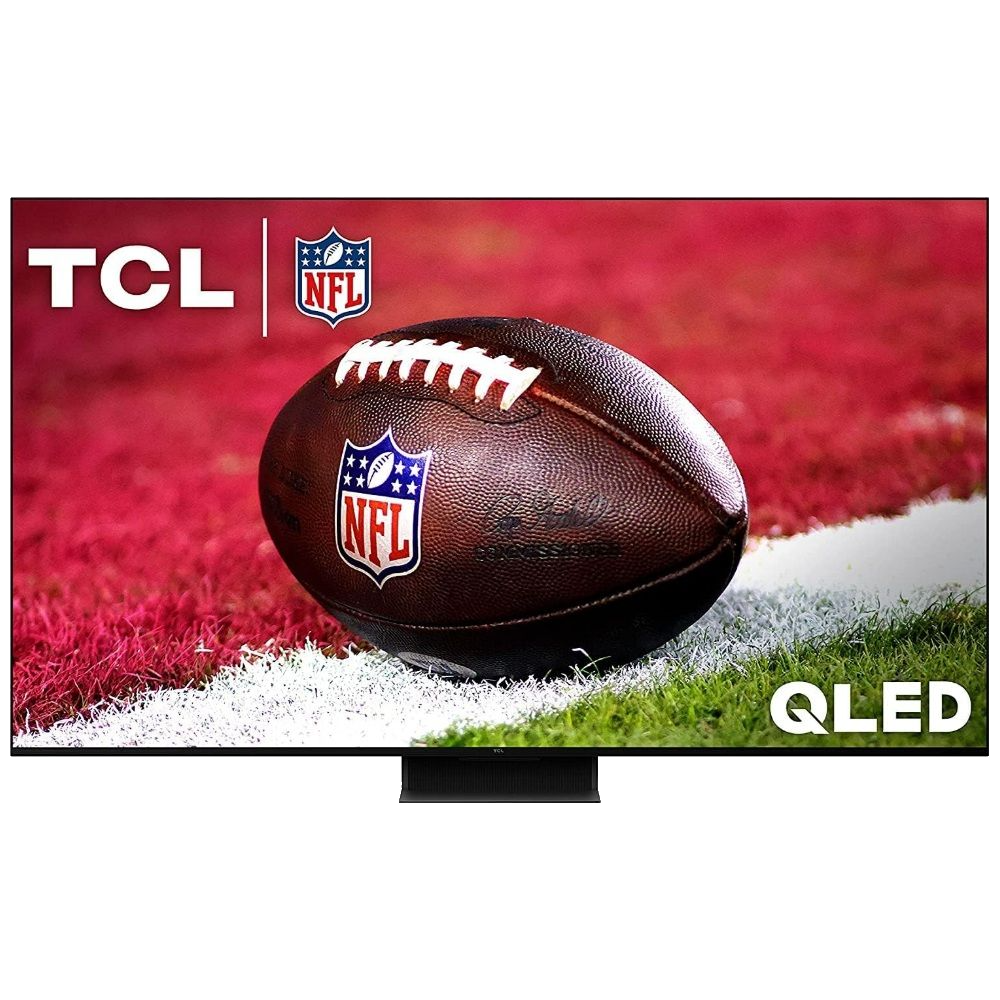

Best QLED TV for Gaming
TCL QM8 QLED TV
Looking for a great QLED TV for gaming? You can’t go wrong with the TCL QM8, a flagship QLED from TCL that features a 144Hz refresh rate, VRR support, low input lag combined with fast response time, and an impressive HDR implementation along with great colors.
Best QLED TV for Movies: Hisense U8N
|
Pros |
Cons |
|---|---|
|
✓ Brighter than the sun |
✗ Poor viewing angles |
|
✓ 144Hz refresh rate |
✗ Pricier than the 2023 model |
|
✓ Fantastic price for what you’re getting |
|
|
✓ Pretty solid built-in sound system |
|
|
✓ Dolby Vision support and an ATSC 3.0 tuner |
Movie fans shopping for a QLED TV should check the Hisense U8N. This is a tremendous QLED TV all-around, but its movie prowess is its strongest point. Thanks to its extremely high HDR and SDR brightness that can surpass 3,000 nits and an equally impressive contrast ratio, the U8N offers an outstanding HDR movie experience that comes dangerously close to what you’d get with an OLED TV.
You’re also getting support for Dolby Vision, DTS audio, and a built-in ATSC 3.0 tuner that supports over-the-air 4K content. Color quality is yet another department in which the U8N excels. The TV has a wide color gamut and pretty good out-of-the-box color calibration. All things considered, this is the best TV for movies and TV shows, both HDR and SDR.
But the Hisense U8N is more than a great TV for movies. Its excellent HDR experience, low response time, VRR support, and up to 144Hz refresh rate at 4K make it an excellent choice for gamers. Thanks to the inclusion of Google TV, this one’s also a great smart TV. Lastly, the TV comes with a pretty solid pair of built-in speakers along with a woofer, a setup that can match the sound quality of some budget soundbars.
Caveats are present, of course. The main one is poor viewing angles, unless you get the 75-inch version that features a different panel with better viewing angles. Also, the price is a bit high compared to last year’s U8K, which performs quite similarly but has lower brightness and contrast. If you want a more affordable alternative, the aforementioned Hisense U8K is the best; just make sure to get it before it gets discontinued.
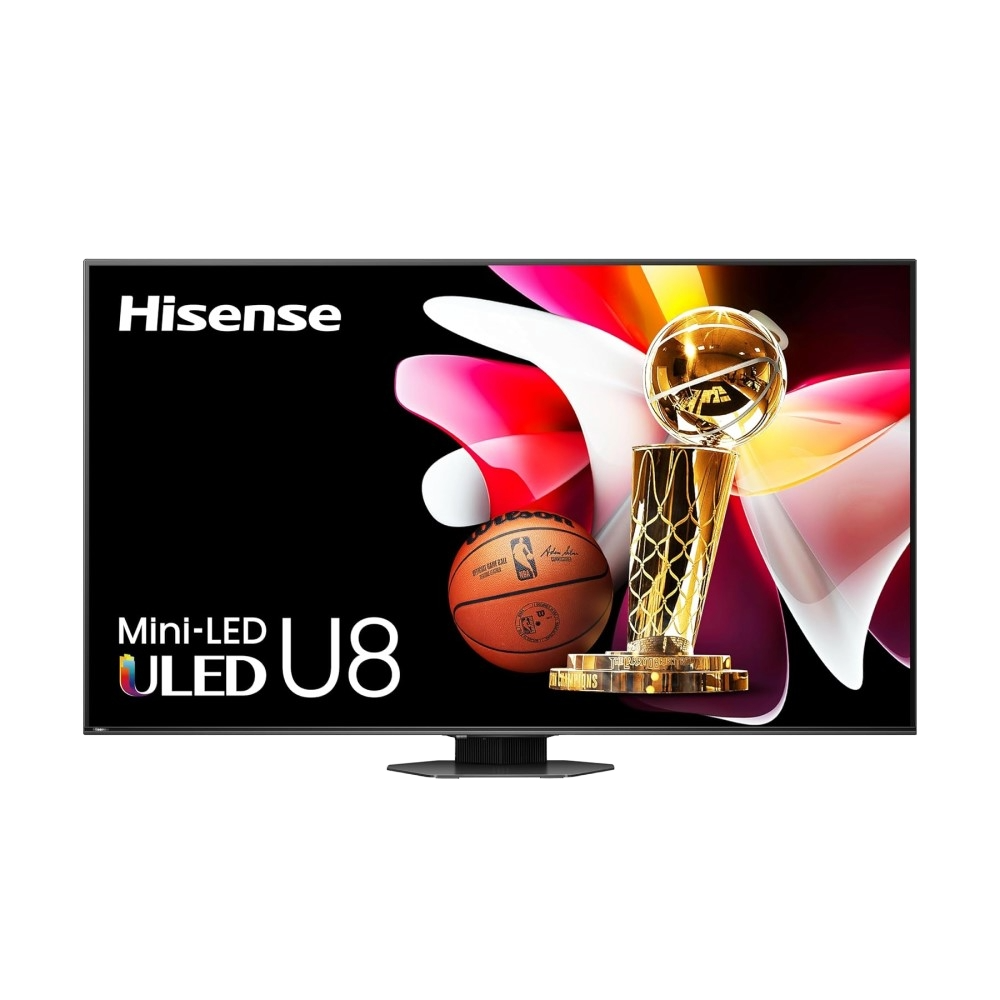

Best QLED TV for Movies
Hisense U8N Mini-LED TV
$1000 $1500 Save $500
Probably the best bang-for-buck QLED TV on the market, the Hisense U8N is an outstanding choice for enjoying movies thanks to its ridiculously high maximum brightness, impressive contrast ratio, and extra punchy colors.
|
Pros |
Cons |
|---|---|
|
✓ Excellent color accuracy and wide color gamut |
✗ Lack of native 8K content available to watch |
|
✓ Brilliant option for 4K gaming |
✗ Super expensive |
|
✓ four HDMI 2.1 ports |
✗ Doesn’t support Dolby Vision |
|
✓ 240Hz refresh rate at 4K |
8K QLED TVs are reserved for the high-end market. They pack a plethora of advanced features and excellent picture quality but also sport prices that match their ultra-high resolution 8K output. The best 8K QLED on the market is Samsung’s 2024 flagship 8K QLED TV, the QN900D. This is an expensive QLED TV that packs a heavy punch.
You’re getting pretty good (but not mindblowing) max HDR brightness of about 1,000 nits, excellent color coverage and accuracy, and a commendable contrast ratio. The TV features a 4K-to-8K upscaler that does a solid job, but even after upscaling, 4K content doesn’t look that much better on an 8K panel. 4K content still looks outstanding on the QN900D, but the wow factor just isn’t there.
Gaming-wise, the QN900D is a fantastic choice. Games look great at 4K, and even though most gamers won’t use the TV to play games at 8K because of the ridiculous demands the 8K resolution carries with it, you can play 4K games at up to 240Hz, which is great news in case you own a beefy gaming PC. The QN900D supports VRR, and it has impressively low input lag, as well as four HDMI 2.1 ports, a combo that, together with the excellent HDR performance, makes the QN900D one of the best TVs for gaming.
While HDR movies look great on the QN900D, it lacks Dolby Vision support, but you’re getting support for Dolby Atmos as well as an ATSC 3.0 tuner. The overall package you’re getting with the QN900D is indeed impressive, but the high price and the lack of Dolby Vision support puts some shade on this otherwise outstanding QLED TV. If you want an 8K QLED TV but the QN900D’s price is too high for your budget, check out last year’s flagship from Samsung, the QN900C or check the Samsung QN800D, a 2024 model that sits just below the QN900D.
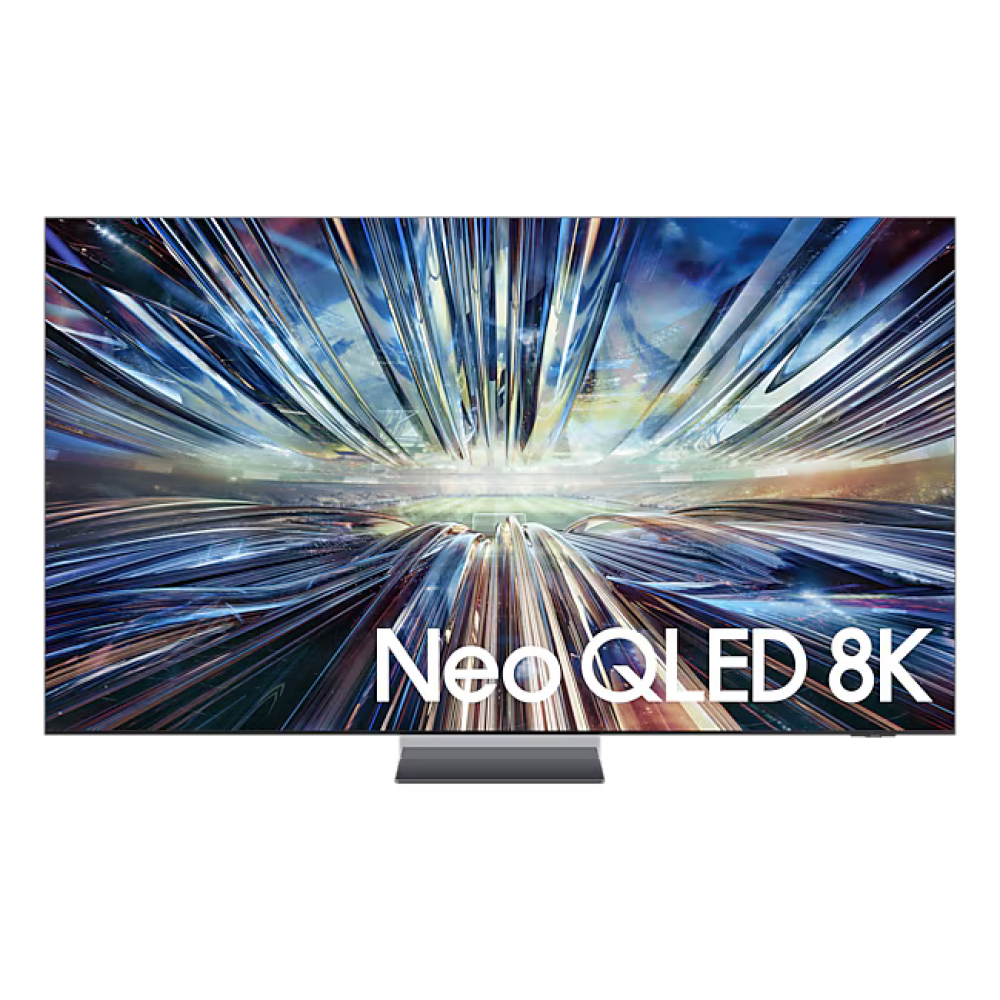

Best 8K QLED TV
Samsung QN900D Neo QLED
$7498 $7998 Save $500
When it comes to the best 8K QLED TV option, you can’t really beat the Samsung QN900D. It offers an exemplary 4K-to-8K upscaler, a plethora of features such as 240Hz refresh rate at 4K and four HDMI 2.1 ports that guarantee a fantastic gaming experience, and a superb picture quality making it one of the best QLED TV options for all you movie aficionados.
FAQ
What does QLED mean?
QLED stands for Quantum Dot LED. It means that a QLED TV uses a regular LCD panel combined with a layer of quantum dots that gives it punchier colors compared to regular LCD TVs.
What is Neo-QLED?
Neo-QLED is a marketing term used by Samsung to label the company’s QLED TVs that use Mini-LED backlight technology.
What’s the difference between QLED and OLED?
OLED is a display panel that features organic, self-emisive LEDs, which means that OLED panels don’t need backlighting and that they can achieve a practically infinite contrast ratio, since each individual LED can be turned off. On the other hand, QLED stands for Quantum Dot LED, which includes regular LCD panels (such as VA or IPS) covered with a quantum dot layer that improves their colors. QLED panels need backlighting and thus can’t match OLED’s infinite contrast ratio.
How do I clean a QLED screen?
You can use a dry or damp microfiber cloth to clean a QLED screen. Just remember to use distilled water to damp the cloth, and to never use alcohol-based cleaning products because they can damage the screen’s coating.
Can you lay a QLED TV flat?
Yes, you can. Just make sure to lay it with the screen facing up and place some sort of protection on the bottom to dampen any impacts and keep the TV from moving around. Also, do not place anything on top of the TV! When it comes to OLED TVs, you can transport them in a horizontal position as long as they are in the original packaging.


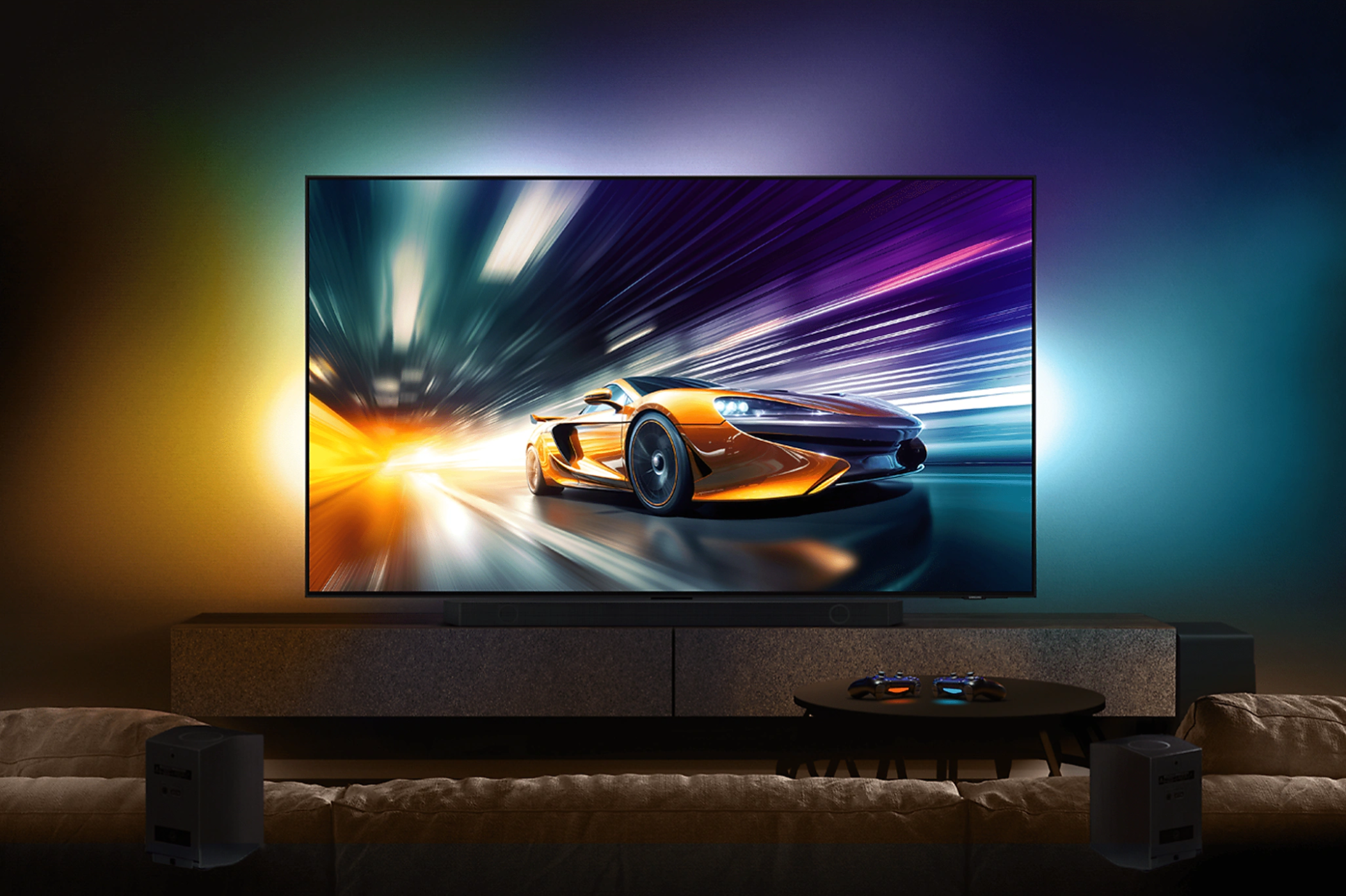
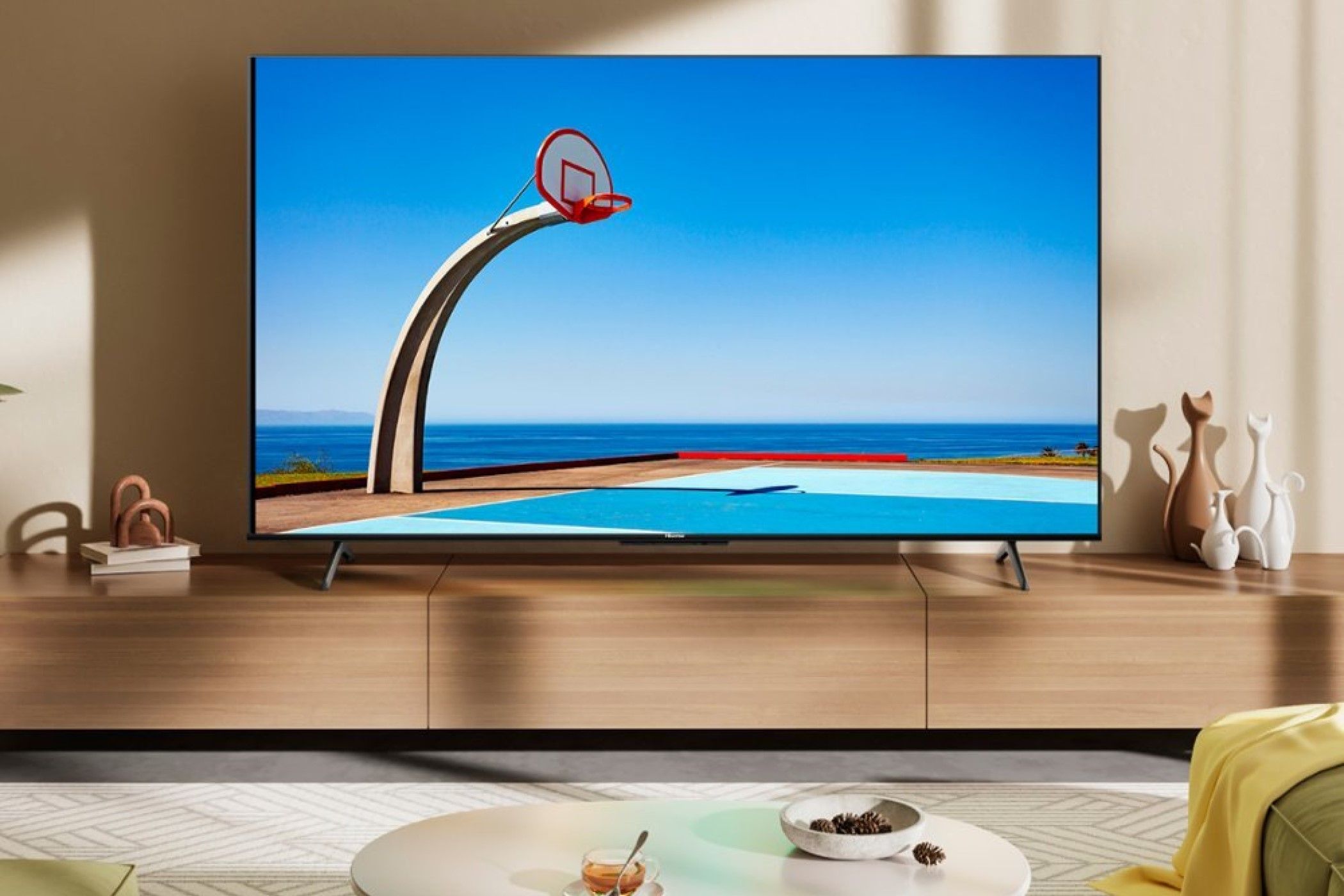
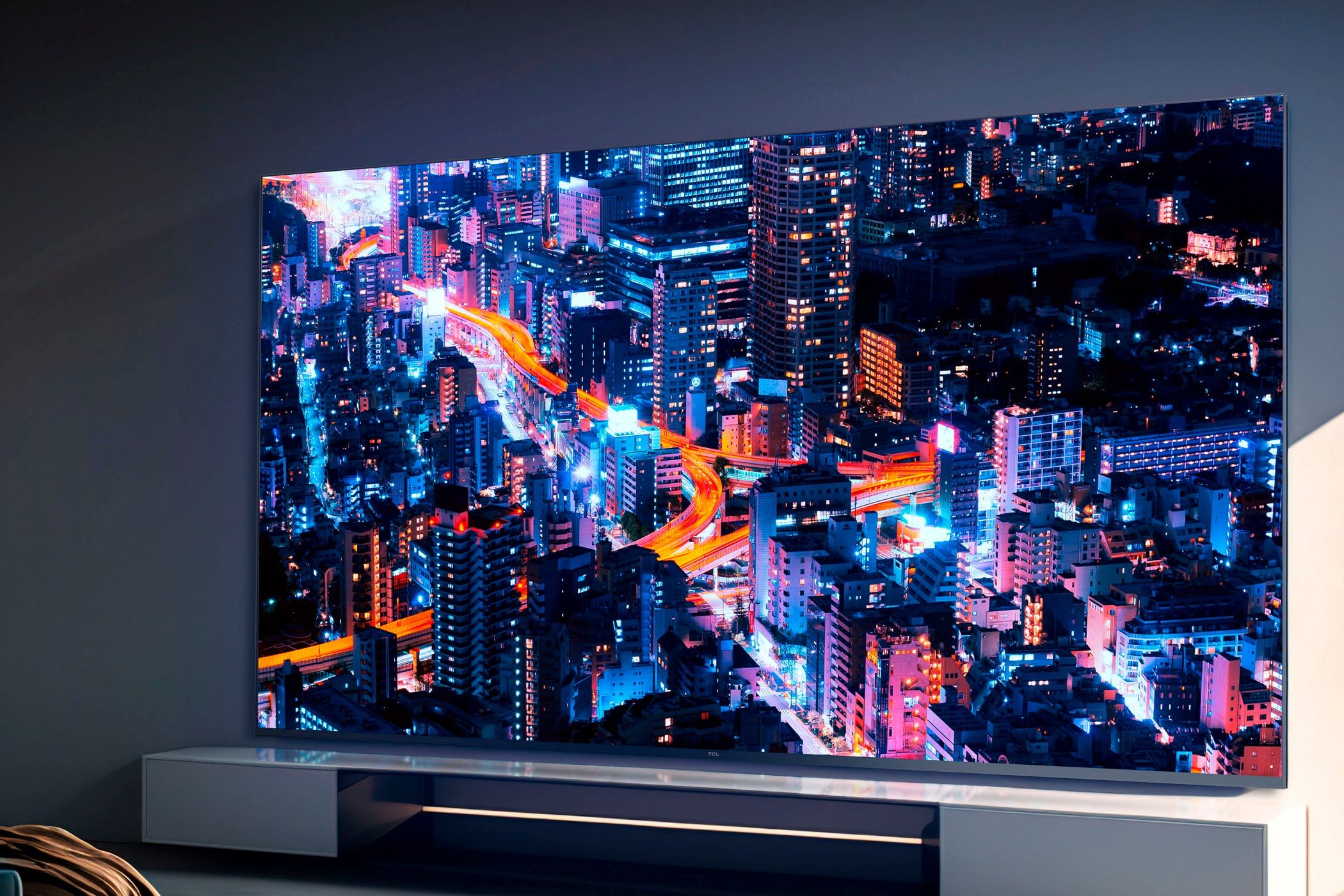
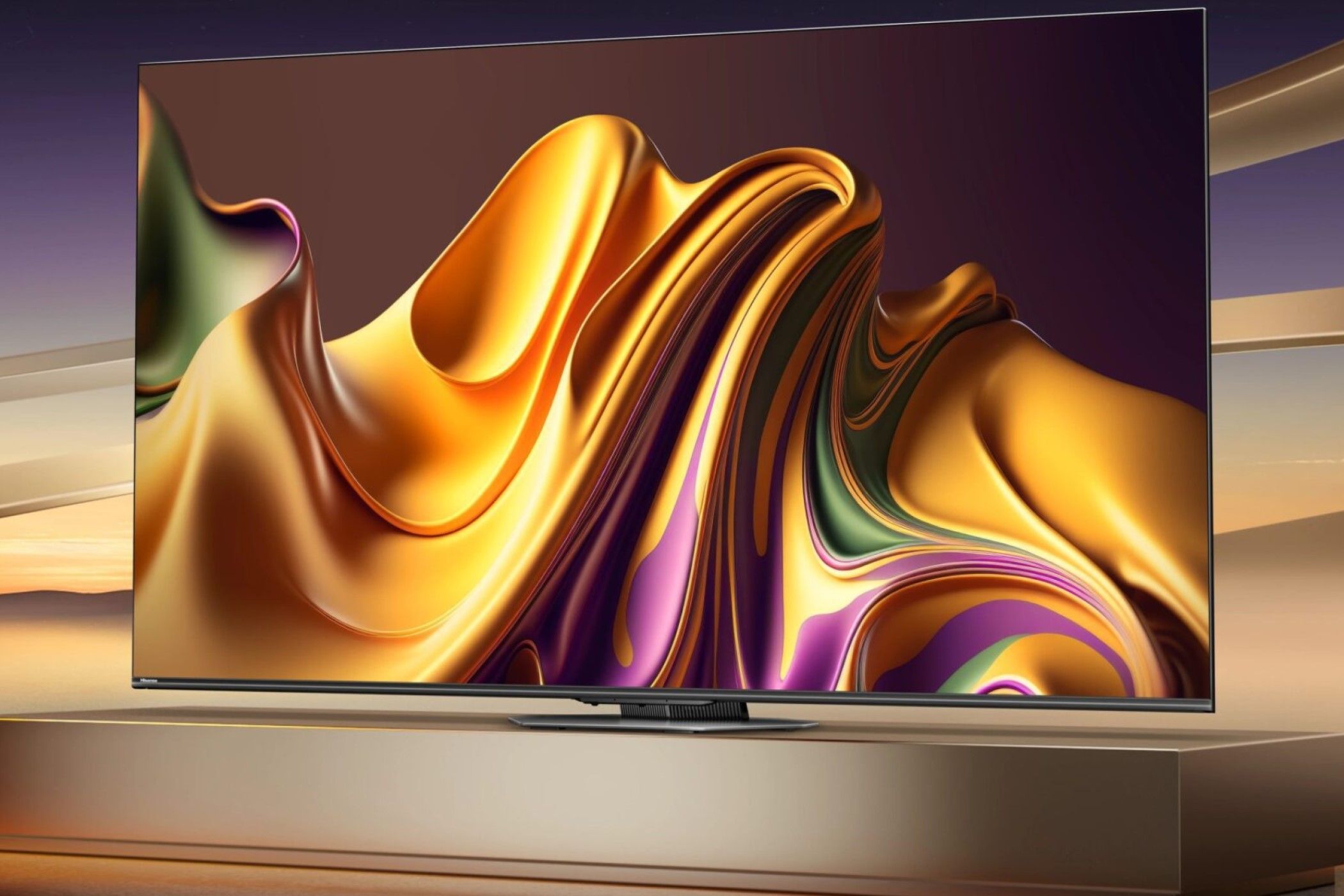
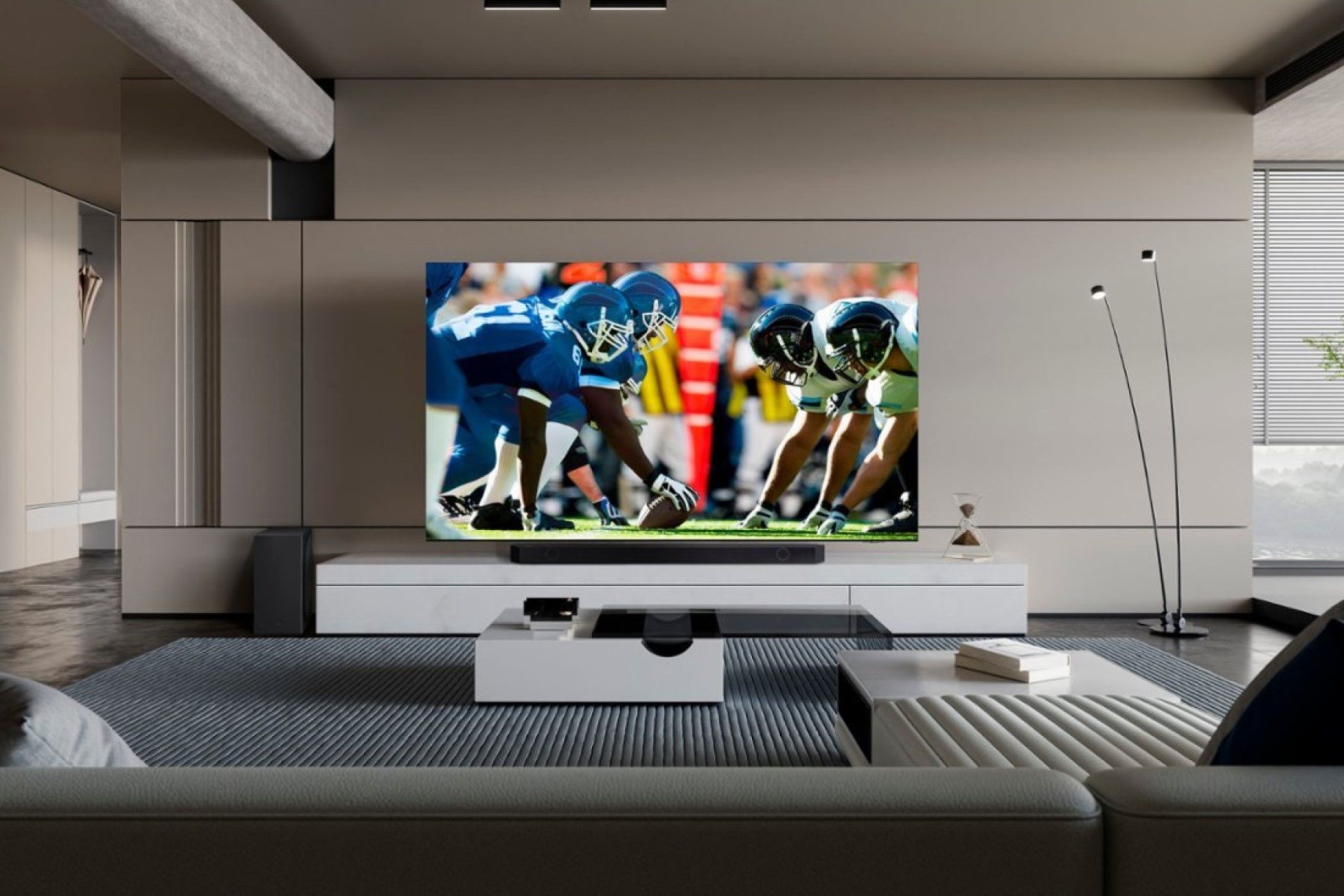

![AirPods 4 review: Pound for pound Apple’s best product [Video]](https://techtelegraph.co.uk/wp-content/uploads/2024/10/AirPods-4-Top-Features-and-Review-218x150.jpg)
